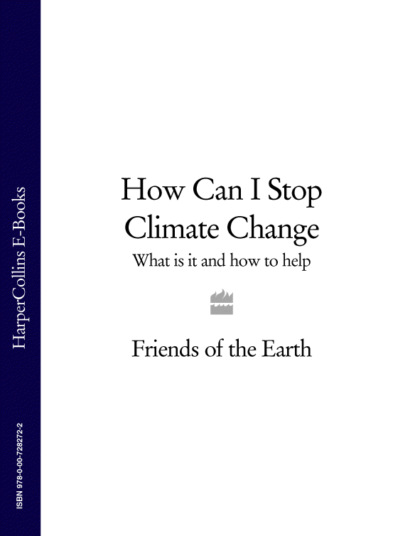По всем вопросам обращайтесь на: info@litportal.ru
(©) 2003-2024.
✖
How Can I Stop Climate Change: What is it and how to help
Настройки чтения
Размер шрифта
Высота строк
Поля
industry
Industry accounts for a big chunk (18 per cent) of the UK’s carbon dioxide emissions; and electricity-generating power stations are responsible for a further 27 per cent. Between these two sectors, nearly half the UK’s emissions are outside the direct control of most of us.
Economic experts at the IPCC say that setting a high price for carbon would make it more attractive for industry to be more efficient. Energy-efficiency measures could create savings of 7-10 per cent without a carbon price, increasing to 23-46 per cent savings if the price of a tonne of carbon rose to US $100.
In the UK the government has so far used a number of financial regulations and incentives to get industry to change. It has sought to encourage action to cut emissions, providing advice and guidance through the Carbon Trust and Envirowise (see p.390). It has introduced a special tax – the Climate Change Levy – on the energy that business and public sector uses. It has also backed emissions trading as a means of encouraging energy efficiency, with the UK part of the Europe-wide Emissions Trading Scheme (see Chapter 6). Originally designed for large energy users, Emissions Trading has subsequently been extended – so that more companies will have to buy the right to pollute.
For more on how we needto clean up the electricitysector, see Chapter 5.
business savings
Chemicals manufacturer Holliday Pigments in Hull found it could save energy by using some of the heat generated by processes in its factory to generate steam, saving some £50,000 from energy bills and reducing its carbon footprint. Broadcaster Sky cut its footprint by 5 per cent in 2005-2006 through steps such as improving energy efficiency in its buildings and vehicle fleet. It also set up a carbon credit card for staff, giving points for carbon-friendly behaviour such as cycling to work. The company switched to renewable electricity supplies and offset its remaining emissions by investing in renewable energy projects in New Zealand and Bulgaria.
offsetting – does it count?
Carbon offsetting has become big business in recent years with companies offering to offset emissions by investing in carbon-saving projects. The idea is that for every tonne of carbon dioxide produced, a tonne is either removed from the atmosphere – by planting trees intended to act as a carbon sink – or avoided, by replacing a polluting activity with a clean alternative, such as renewable energy.
Some offsetting schemes have been criticised on a number of counts. Although trees remove carbon dioxide from the atmosphere, they must remain in situ to prevent the carbon being released again, so there would have to be strong guarantees that forests planted this year to offset emissions were not cut down a couple of years later. There are other problems with tree-planting offset schemes, too: large plantations where just one type of tree is grown are bad news for wildlife and can cause problems for people locally.
Offsetting schemes that invest in renewable energy projects can benefit communities in the developing world, and a gold standard has been established for offsetting schemes that deliver genuine benefits. This guarantees that the investment is made in a scheme that would have struggled to find funding in any other way.
However robust an individual offset scheme, Friends of the Earth points out that it is simply a way for the industrialised world to buy the right to continue polluting rather than cutting emissions at source. Offsetting allows companies and individuals to claim that they are tackling carbon emissions when they may not be doing anything to cut emissions at source. Such an approach will do little to reduce the UK’s emissions of carbon dioxide. The spread of carbon offsetting may have helped stimulate awareness of climate change, but many people now argue that it should be a last resort – and that genuine cuts to carbon emissions must come first.
local authorities
The government estimates local authorities can cut their own energy use by 11 per cent. Although local authorities themselves are responsible for a small proportion of UK emissions they have powers beyond their own buildings, land and work force: they also influence suppliers and services through the goods and services they buy; they control local planning and development, and are responsible for green spaces and promoting public transport.
A scattering of local authorities have embraced the need to take action on climate change. More than 220 have signed a commitment to make this a cornerstone of their policies. The year 2000 saw the launch of The ‘Nottingham Declaration on Climate Change’ (updated in 2005), in which all signed up councils were encouraged to develop a climate change action plan and set targets for reducing emissions.
Nottingham City Council, the first authority to sign, has reduced its carbon emissions by 30,000 tonnes by using renewable energy supplies. Its policies have helped stabilise emissions from transport in the city and boosted recycling rates. The council is now looking to become carbon neutral.
schools
Some 6,000 primary and secondary schools across the UK are involved in the Eco-School scheme, which encourages teachers and pupils to work together to come up with ways to save energy, improve recycling and save water at school.
As well as cutting emissions, schools taking part find the scheme has other benefits, including better links to the wider community, improvements in the school ethos and relations between staff and pupils, and reduced bills. Some funding is available from the government to support low-carbon and energy-saving measures, but critics say there is not nearly enough to go round.
transport
Road transport accounts for between a fifth and a quarter of UK emissions. Emissions from transport are on the up: more and more vehicles on the road mean that carbon dioxide emissions have risen by 9 per cent since 1990. With government figures showing carbon dioxide emissions from transport set to soar, can anything be done to save energy and emissions in the transport sector?
According to the experts, savings are possible but require a big shift in behaviour, encouraged by changes to transport policies – locally and at national level.
on the road
When it comes to travelling by car, there are two basic ways to reduce the level of emissions: driving more efficiently and driving less.
driving more efficiently
More efficient driving means getting more miles out of every gallon of fuel or using different fuels. So we need to look at the way people drive and the types of car they use. The performance of modern vehicles varies enormously, from small vehicles that can do 65-70 mpg, to big gas-guzzlers that manage less than 15 mpg. Carbon dioxide emissions are directly related to miles per gallon and so can vary from 104 g/km for a Toyota Prius hybrid to 520 g/km for a sports car (Lamborghini Diablo 132) and 387 g/km for a 4X4 (Toyota Land Cruiser). Within each class of car performance varies too: at 186-219 g/km, for example, a Lexus hybrid is much more polluting than the Prius. An average motor emits 90 kg of carbon dioxide for every full tank of petrol used.
A UK government-commissioned study found that, assuming the car will continue to be the way most people choose to get around, the best thing to do will be to make cars as low-carbon as possible. The European Union has set a target for car manufacturers to reduce average emissions from new cars to 140 g/km carbon dioxide by 2010; new cars sold in the UK in 2006 were above this average, at 167.2 g/km. Tougher emissions standards for vehicles would make one of the biggest contributions to cutting transport’s carbon fuel bill.
driving less
Another way of cutting emissions is to reduce the numbers of car journeys. In the UK 17 million people go to work by car. Workplace travel schemes can make it easier to leave the car at home – with employers providing cycle facilities, showers and loans to buy a bike, or setting up lift-share schemes or loans for season tickets on public transport.
SUPER CYCLEWAYS:
By 2025 London could be the cycling capital of the world. Around £4 million will see cycling become a fully-funded part of the public transport network. Plans include a new free bike lending scheme (offering 6,000 bikes every 300 m) and 12 cycle highways to make pedal power a real travel choice for everyone.
Flexible working can reduce the need to commute – working from home one day a week can cut transport emissions by 20 per cent. A study by BT into the impact of home working found that, on average, employees working from home reduced their carbon dioxide emissions by 15.2 kg per week. Even assuming that some savings would be lost by increases in home energy use, the study found total emissions for 5,000 employees were reduced by some 3,663 tonnes per year.
Cycling and walking can be easy alternatives for short car trips, but longer journeys and city-wide travel need better public transport. Good bus services, light rail and trams can provide alternatives to driving, substantially reducing carbon dioxide emissions.
The city of Curitiba in Brazil has been held up as a model of what public transport can achieve if investment and urban planning keep the needs of people in mind. The city, which has a growing population of more than 1.6 million people, invested in buses as its main public transport, creating special bus-only avenues. The system, which is cheap to use, carries some 2.14 million passengers a day despite high levels of car ownership. The result has been cleaner city air and some of lowest rates of fuel consumption per person in Brazil.
Freiburg in Germany (see also pp.94-95) is one of many European cities to have developed a low-carbon approach to getting about. The city has 160 km of sign-posted cycle paths, cycle-only streets and special access on one-way routes. Buses and trams carry 67 million people a year, with cheap tickets for families.
In France the Mayor of Paris has introduced a low-cost bike rental scheme in the capital, providing bicycles at 750 stations around the city. Users of the Velib bike scheme can buy either an annual pass (priced at £20) or a one-day pass (less than £1), with short journeys completely free. Paris has some 230 miles of cycle paths and the number of cyclists in the city has increased by 50 per cent in the past ten years.
A charge on drivers entering the city centre, combined with investment in public transport, has cut the level of traffic in inner London, with increases in the numbers of people travelling by tube and bus. One opinion survey found that 1 in 5 drivers would leave their car at home and use public transport if road charging schemes were introduced across the UK.
Improvements to public transport can tempt drivers out of their cars for longer distance trips, with both coach and rail travel offering lower carbon dioxide emissions per passenger mile. Planning policies can also have an impact – for instance local development plans can ensure new shops are accessible by public transport or by foot.
A UK government study found that with the right policies, emissions from road transport could be reduced by 60 per cent from 1990 levels by 2030. Some of these savings depend on using hybrid vehicles and alternative fuels, but measures such as road pricing, energy-efficient driving and changes to freight distribution systems also had a role to play.
VIVE LA REVOLUTION:
‘This is about revolutionising urban culture,’ says Pierre Aidenbaum, mayor of Paris’ third arrondissement, as the capital provides more than 10,000 bicycles for Parisians and visitors alike.
potential emissions savings from different transport measures
*million tonnes carbon per year
Further savings would be possible if we changed the way we live in our cities and towns: better inner city housing and pedestrian and cycle access to shops and services encourage people to use their cars less. When planners redeveloped the German capital of Berlin, they included a car-free zone in the centre as part of the city’s commitment to cut emissions by 40 per cent by 2020. Homes in the car-free area are surrounded by pedestrian and cycle paths, but no parking spaces. Local shops and services mean residents do not need to use a car. A new building code now restricts parking for new buildings in the city.
Better public transport, towns designed for pedestrians, less congestion, less pollution, and fewer journeys by car could all improve our quality of life.
air travel
Air travel accounts for a growing percentage of the UK’s carbon dioxide emissions. If current levels of growth continue, emissions from aviation could account for 80 per cent of the UK’s entire carbon budget by 2050.
There is certainly scope to make aeroplanes more efficient. Improvements have been made since the first jets came into service in the 1960s – although early jets were much more polluting than their propellor-driven predecessors and jets have only recently reached the same level of efficiency as the engines of the 1950. Aircraft manufacturer Boeing advertises that its recent 747-8 Intercontinental aircraft has improved fuel efficiency by 15 per cent, resulting in 75 g per passenger km (that’s equivalent to 202 g/km if we count the effect of emissions in the upper atmosphere). New designs could help improve aircraft efficiency. The flying wing – or blended wing-body design, which extends the passenger cabin into the wings of the aircraft, could make planes lighter and more aerodynamic, so saving fuel. Its champions claim it could reduce emissions by 90 per cent within 50 years. Plans are still on the drawing board, however, and while engineers are confident that the planes could be built, they are not yet considered commercially viable.
Research by the Tyndall Centre for Climate Change Research suggests that for aviation to play its part in keeping carbon emissions within safe limits, it would need to make efficiency gains much faster than it has ever done in the past. In fact the Tyndall Centre’s research suggests aircraft engine efficiency will improve by such a small amount each year that any gains would be more than cancelled out by the rapid growth in the number of flights we take. One problem with any efficiency improvements in aviation is that they can take such a long time to come into effect. The life span of the average passenger aircraft is some 30 to 50 years and two-thirds of all the aircraft likely to be flying in 2030 are already in use. Carbon cuts are needed long before that.
Aviation’s growing share of the UK’s projected carbon emissions











